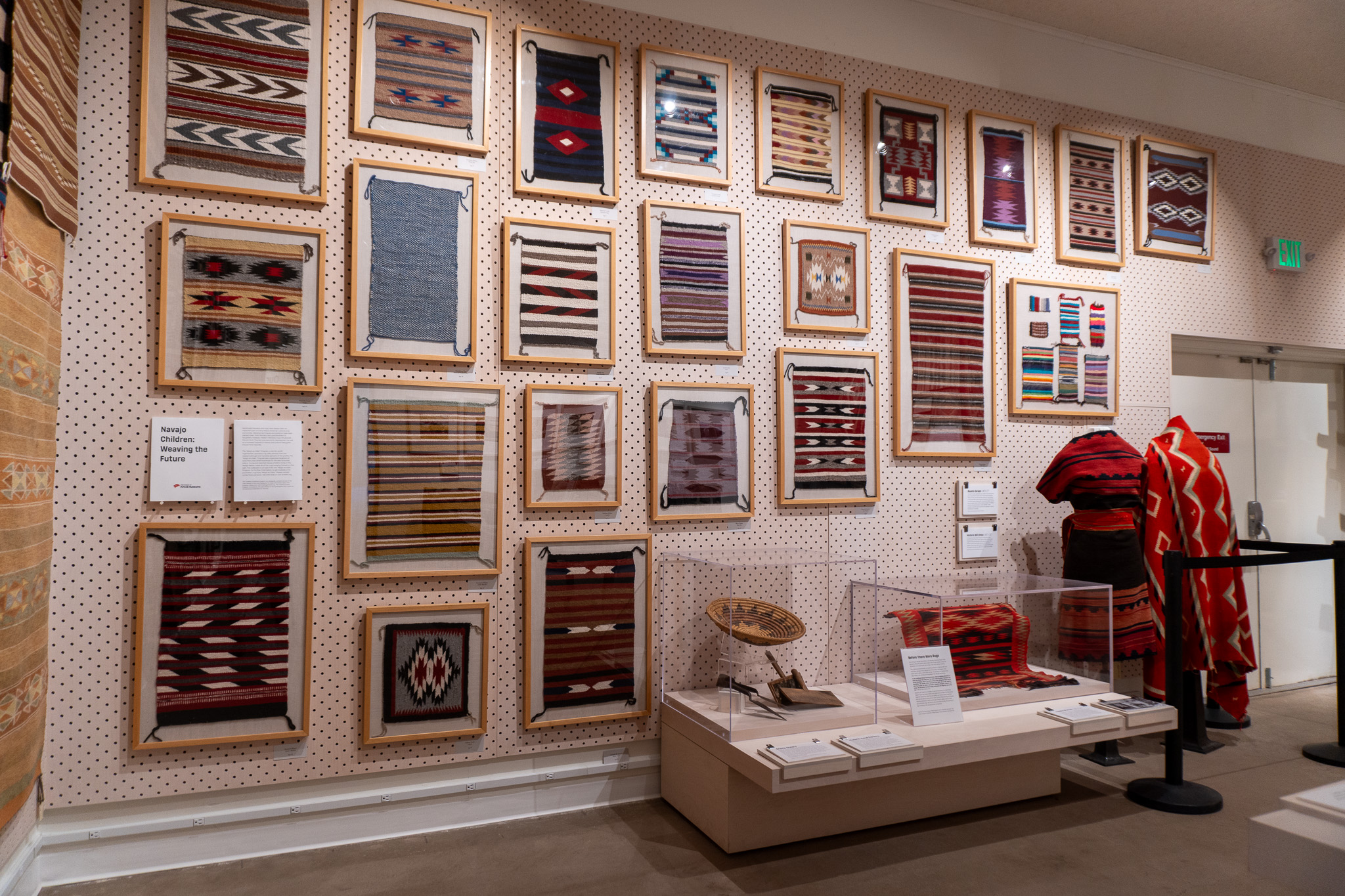Some information may be outdated.
Traveling exhibits
Museums large and small often opt to borrow traveling exhibits to temporarily integrate into their galleries when they align with their institution’s scope or programming. Larger institutions such as the Smithsonian or the Utah Department of Arts and Museums (UDAM) often loan out these collections.
“These exhibitions and their accompanying educational materials provide public access to quality visual art, nurture understanding of diverse art forms and cultures, promote creativity, and encourage cultural activities in local communities,” says the UDAM website.
Traveling exhibits have the power to “democratize history and storytelling,” according to Mary Langworthy, the public programs manager at the Museum. They allow the Museum to broaden the reach of its own collection, adding materials that were not owned or located here in Moab. Additionally, they offer a researched storyline that has been peer-vetted and compiled by professionals at trusted institutions.
“A traveling exhibit blends insight from another curator or institution,” said Tara Beresh, curator at the Moab Museum.
UDAM loans their traveling exhibits nationwide. The Moab Museum has hosted several of these exhibits, including a “Block Prints by Everett Ruess” exhibit that was on display this winter, and “Navajo Children: Weaving the Future,” which is currently on display.
“Weaving the Future
The Moab Museum team, led by Beresh, set out to illustrate the story of Navajo weaving in an immersive format. Beresh wanted the space to inspire the feeling of a trading post, the type of establishment that has historically been found across the Southwest and the Navajo Nation, bringing in Navajo voices, weavers themselves, textile collectors, and the next generations to carry on the tradition.
“This exhibit contains textiles from both contemporary and historic time periods, all woven by adult and/or expert weavers,” Beresh said. “UDAM’s ‘Weaving the Future’ is a collection of textiles woven by children, which demonstrate the connection of weaving to people’s lives from birth to adulthood, highlighting that the craft is about more than a culture’s livelihood. It presents a tangible example of the importance of artistry beyond consumerism.
“Navajo Children: Weaving the Future” displays the lifestyle and generational nature of the art form. The exhibit features weavings from children ages 4-15 who are a part of the “Adopt-an-Elder” program, which provides an environment in which traditional weaving techniques can be passed on within a community. This enables youth to perpetuate the practice and tap into the global tourism market inspired by a renewed interest in history and culture, as well as economic development activity.
The children’s weavings provide balance to the rest of the textiles on display, impressing upon the viewer that there is significance and joy imbued into the process of weaving, without a focus on the commercial viability of their art. In other words, it’s not about the market. “Weaving the Future” is about weaving for weaving’s sake. Weaving is a method of expressing the Navajo story; it is about life.
The Moab Museum is dedicated to sharing stories of the natural and human history of the Moab area. To explore more of Moab’s stories and artifacts, find out about upcoming programs, and become a Member, visit www.moabmuseum.org.
Appreciate the coverage? Help keep local news alive.
Chip in to support the Moab Sun News.





